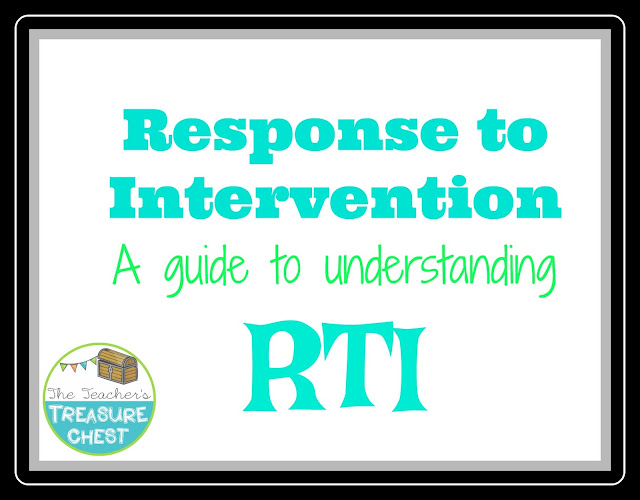Reading Intervention For Elementary Students
Hey friends. Most of you know that I've taught in a variety of states due to my husband's military service. There is several benefits (and drawbacks as well) to this set up. The biggest advantage to moving every few years is seeing how each and every district runs their reading intervention programs. While in Virginia, I really feel like that's where my teaching was fine tuned. At this school, we had a school wide reading intervention program. In this program, we sent out students who were high achieving for enrichment activities. We split the struggling students into groups of three. The best part of this system was that every staff member on campus was utilized during this time. Scheduling an intervention block is an essential component to a successful elementary school. This is how you can reach your lowest quartile of students the most effectively. A school wide intervention system may not be in reach for you at this time, so I'm going to share some suggestions to make your intervention system work for you.
Scheduling Your Intervention Block
One way to think of your reading intervention time is an extra instructional block in the skill students are the weakest in. I really make an effort from day one to schedule my intervention block in so that time is always used for something. I try to make sure that my intervention block is always scheduled at a separate time than reading or math. This is done on purpose. Intervention shouldn't just be and extension of your reading lesson where you keep the lower group "longer". I really try to make sure it's a complete different set up than our guided reading or guided math groups.
Student Grouping
Student grouping is essential to a successful intervention block. I strive to make sure I have no more than three students in an intervention group. Here's why: This is an intensive instructional strategy to ensure that each student really receives the attention they need. I know this is a very difficult task with having 23 other students that need your attention. I try to think about it this way, if I don't help the most struggling students, who will? They came to me as struggling students and unless I do something drastic, they will remain struggling students. This is the attitude we need to have in regards to students who receive intensive intervention. Some ideas to help is to ask if your office clerk or school nurse could come in your classroom for 25 minutes a day. They maybe able to work with a medium/low group while you work with the lowest group. Here's the thing, I know it's awkward to ask other people for help. I get it. Everyone has a job and a purpose on that campus. At the end of the day, though, it is the job of the school community to ensure that EVERY child is successful. Maybe the nurse can only come down two days a week, TAKE IT. Give them the materials to use and make it easy for them. Make sure to make a huge deal out of how much help it is. I've asked and been told no. But more times than I've been told NO, I've been told YES.
What are the other students doing during intervention?
This is not an easy question to answer. Let me tell you why. It depends on your students. If you are a third or fourth grade teacher with a well behaved group of students, I encourage you to think about doing a book study. Something the students can read and answer questions on their own and is a separate book than their guided reading set. If you have a group of rowdy first graders, than you might need to consider allowing them this opportunity for seat work. I'm not a fan of a designated "seat work time", however, one year, I had a group that could not handle another center rotation or any cooperative learning more than during guided reading. With this group, I created folders for the students to complete at their own pace. I collected them weekly and checked for completion (unless major errors where obvious). My saving grace for this was The Moffatt Girls! This product SAVED me. I've also used these literacy center mats for my students who are not in my intervention group.
What about Math Intervention?
Math intervention is also a very important part of your classroom. If you only have one block of time for "intervention", I encourage you to rotate between math and reading. You could also glance at your data and see how many students truly need math intervention. If you only have one or two students, maybe you could convince someone to help you during guided math.
How do I know a student needs further testing?
This is a question I get asked on my Facebook page often. Here's my recommendation: whenever you begin an intensive intervention process, you should go ahead and document what you are doing. This way, if the student continues to not make progress with intensive intervention in place, you may need to look into the testing process. However, you will have weeks and weeks of documented intervention data to show that you've made every attempt to help the student. Documentation does not have to be difficult. I struggled for many years with how to document my reading intervention program and then I created progress monitoring components to help me stay on track with the documentation process.








